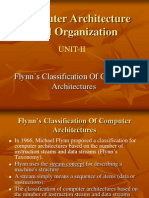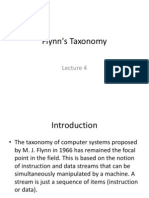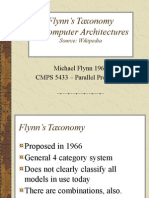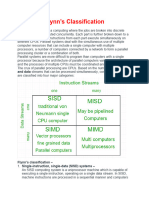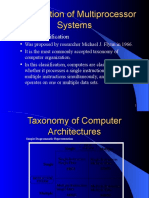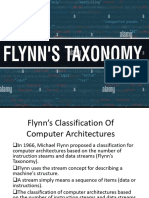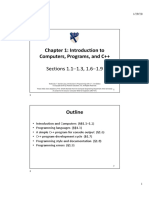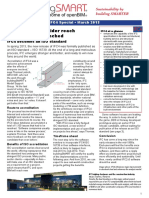0% found this document useful (0 votes)
4 views20 pagesLecture 02
The document outlines Flynn's Taxonomy, a classification system for digital computers proposed by Michael J. Flynn in 1966, which categorizes architectures based on the number of instruction and data streams. The four categories defined are SISD, SIMD, MISD, and MIMD, each with distinct characteristics and applications. The document also discusses the advantages and limitations of each category, particularly in relation to parallelism and processing capabilities.
Uploaded by
Areeba GulCopyright
© © All Rights Reserved
We take content rights seriously. If you suspect this is your content, claim it here.
Available Formats
Download as PDF, TXT or read online on Scribd
0% found this document useful (0 votes)
4 views20 pagesLecture 02
The document outlines Flynn's Taxonomy, a classification system for digital computers proposed by Michael J. Flynn in 1966, which categorizes architectures based on the number of instruction and data streams. The four categories defined are SISD, SIMD, MISD, and MIMD, each with distinct characteristics and applications. The document also discusses the advantages and limitations of each category, particularly in relation to parallelism and processing capabilities.
Uploaded by
Areeba GulCopyright
© © All Rights Reserved
We take content rights seriously. If you suspect this is your content, claim it here.
Available Formats
Download as PDF, TXT or read online on Scribd
/ 20










